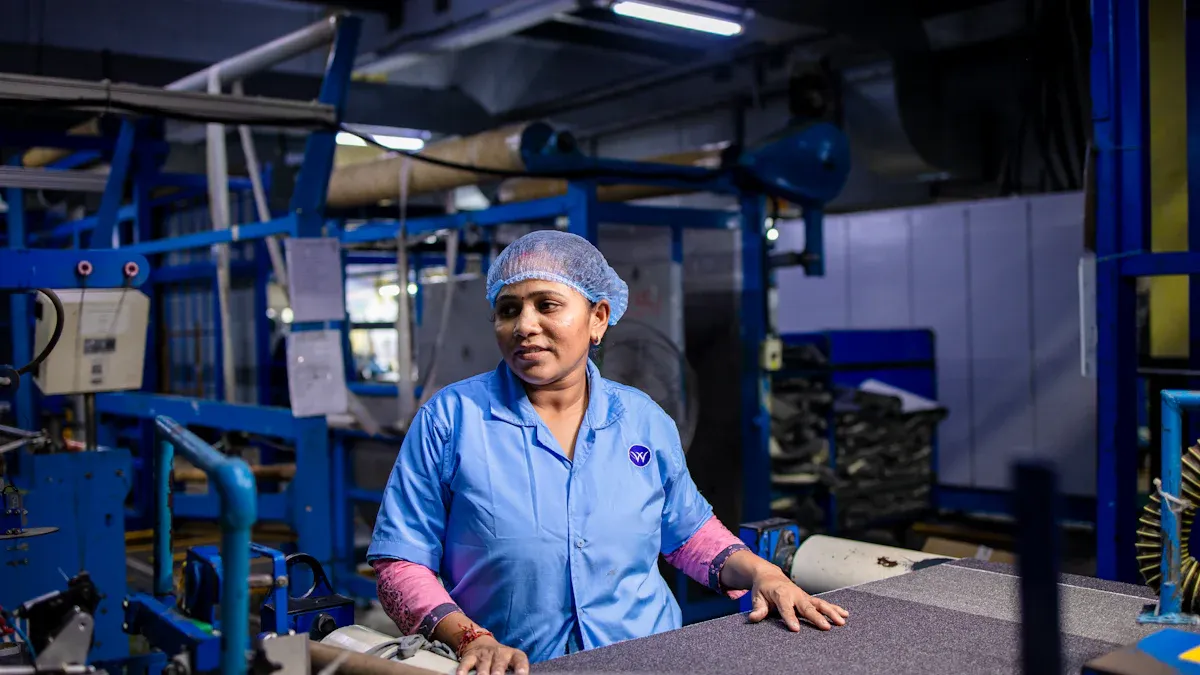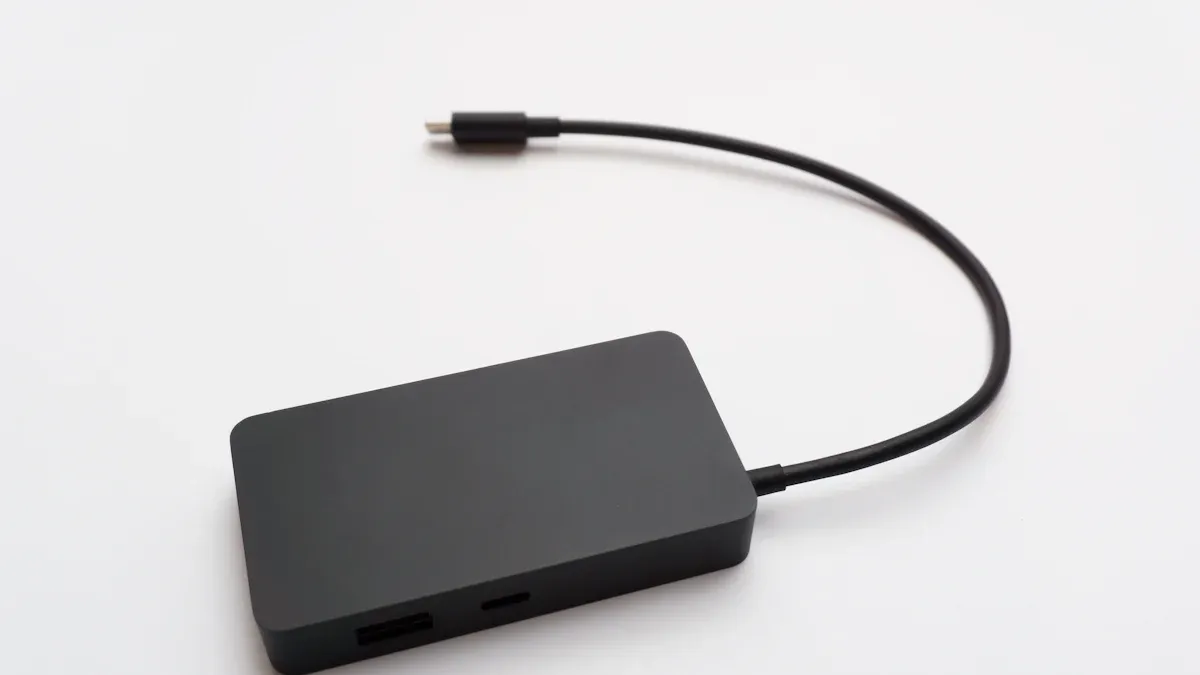USB hub manufacturers play a vital role in ensuring the quality of their products during mass production. With the global USB hub market projected to grow from $4.4 billion in 2023 to $8.4 billion by 2032, the demand for reliable and high-performing USB hubs continues to rise. This growth, driven by advancements in USB technology and the increasing adoption of USB-C devices, reflects the importance of prioritizing quality. Manufacturers achieve this by focusing on durability, compatibility, and performance to meet the needs of consumers. A high-quality USB hub ensures seamless data transfer and dependable connectivity, making it an essential tool in today’s tech-driven world.
Quality Control Processes
USB hub manufacturers rely on robust quality control processes to ensure their products meet high standards. These processes cover every stage of production, from sourcing materials to testing the final product. By focusing on quality at each step, manufacturers deliver USB hubs that are reliable, durable, and efficient.
Material Sourcing and Inspection
The journey to a high-quality USB hub begins with sourcing the right materials. Manufacturers carefully select components that meet strict standards for durability and performance. For example, the materials used for USB ports must withstand repeated use without degrading.
You might wonder how manufacturers ensure these materials meet their requirements. They conduct thorough inspections before production begins. These inspections check for defects, inconsistencies, or impurities that could affect the hub’s performance. By starting with high-quality materials, manufacturers lay the foundation for a reliable product.
In-Process Quality Checks
During production, manufacturers perform in-process quality checks to catch issues early. These checks focus on critical aspects like the alignment of USB ports, the integrity of soldered connections, and the overall assembly process.
Automation plays a key role here. Machines equipped with sensors and cameras monitor the assembly line, ensuring each hub meets precise specifications. For example, if a USB port is misaligned, the system flags the issue immediately. This approach minimizes errors and ensures consistency across all units.
Final Product Testing
Before a USB hub reaches you, it undergoes rigorous final testing. Manufacturers test each hub to ensure it performs as expected under real-world conditions. These tests evaluate data transfer speed, power delivery, and compatibility with various devices.
For instance, a manufacturer might connect the hub to multiple devices simultaneously to check its performance. They also test the durability of USB ports by simulating repeated use. By the time the hub leaves the factory, you can trust that it has passed all necessary quality checks.
Advanced Manufacturing Techniques
Automation in Assembly
Automation has revolutionized the way USB hubs are manufactured. By using advanced robotics and modular solutions, manufacturers can assemble hubs with incredible precision and consistency. Machines equipped with sensors and cameras monitor every step of the assembly process. This ensures that components like USB ports are aligned perfectly and soldered securely.
Automation also makes production more efficient. Modular systems allow manufacturers to integrate automation into existing setups without significant costs. This accessibility has made it easier for companies to scale their operations while maintaining high-quality standards. Additionally, 5G networks enhance automation by enabling better remote monitoring and maintenance, which improves safety and efficiency.
Precision Engineering for USB Ports
The quality of USB hubs depends heavily on the precision engineering of their ports. Even the smallest misalignment during production can lead to defects that affect performance. For example, when solder paste printing and component placement are not perfectly aligned, it can result in faulty connections.
Manufacturers manage this by adhering to strict tolerances during production. Every stencil, circuit board, and placement machine must meet exact specifications. This level of precision ensures that USB ports can handle repeated use without compromising data transfer speed or power delivery. By focusing on these details, manufacturers create hubs that are both reliable and durable.
Minimizing Defects Through Technology
New technologies have significantly reduced defect rates in USB hub production. For instance, Intel’s 18A process technology has achieved a defect density below 0.4 d0, which is comparable to TSMC’s advanced processes. This low defect density ensures that hubs perform consistently and meet consumer expectations.
Manufacturers also adopt renewable energy sources and focus on traceability to improve sustainability. By minimizing fossil fuel use and ensuring the traceability of components, they meet both environmental and quality standards. These advancements not only reduce defects but also align with consumer demands for eco-friendly products.
Adherence to Industry Standards
USB hub manufacturers must adhere to strict industry standards to ensure their products meet performance, safety, and environmental requirements. These standards not only guarantee the reliability of USB hubs but also build trust with consumers by ensuring compliance with global benchmarks.
USB-IF Certification Process
The USB Implementers Forum (USB-IF) certification process is a critical step for manufacturers aiming to deliver high-quality USB hubs. This certification ensures that a hub complies with USB specifications, guaranteeing compatibility and performance across a wide range of devices. When you see a USB-IF certified product, you can trust that it has undergone rigorous testing.
Manufacturers use advanced tools like Teledyne LeCroy’s Voyager M4x to verify compliance with USB4 specifications. This ensures that hubs meet the latest standards for speed, data transfer, and interoperability. Additionally, USB-IF has introduced new certification logos to help you easily identify compliant products. These logos simplify your purchasing decisions by highlighting hubs that meet industry benchmarks.
Environmental Compliance (RoHS)
Environmental compliance is another essential aspect of USB hub production. The Restriction of Hazardous Substances (RoHS) directive ensures that electronic products, including USB hubs, are free from harmful materials like lead, mercury, and cadmium. By adhering to RoHS standards, manufacturers contribute to a safer environment and reduce the ecological impact of their products.
Leading manufacturers, such as Molex, maintain strict compliance policies to manage hazardous substances. They follow guidelines like the Chemical Substances Specification (MCSS), which addresses both prohibited and declarable materials. This ensures that every hub you purchase aligns with environmental regulations. Furthermore, declarations of conformity for RoHS compliance are often available upon request, providing transparency and peace of mind.
Global Manufacturing Standards
To maintain consistency and quality, USB hub manufacturers follow global manufacturing standards. These standards cover every aspect of production, from material sourcing to final assembly. For example, bus-powered hubs must maintain a voltage drop of 100 mV or less between downstream and upstream ports under a 100 mA load. Similarly, powered USB hub ports are required to provide a VBUS voltage between 4.75 V and 5.25 V, while bus-powered hubs must maintain a VBUS of 4.4 V or greater. These specifications ensure that hubs deliver reliable performance.
Manufacturers also conduct droop tests to assess voltage stability under varying loads. This test alternates between a 100 mA load and no-load conditions to evaluate the worst-case voltage droop. By meeting these stringent requirements, manufacturers ensure that USB hubs perform consistently and meet your expectations for speed and data transfer.
Customization and Scalability
Custom Design Processes
Customization plays a key role in USB hub manufacturing. Manufacturers tailor their designs to meet specific customer needs, ensuring the hubs align with unique requirements for functionality and aesthetics. You benefit from this approach because it allows you to choose hubs that fit your devices and workspace perfectly.
Leading companies invest heavily in research and development to stay ahead in technology. For example:
– The multiport USB hub market thrives on rapid innovation and intense competition.
– Brands like Anker Innovations are recognized for cutting-edge designs and performance.
– Emerging manufacturers focus on customer-centric designs, offering efficient and stylish hubs.
These efforts result in USB hubs that combine advanced features with sleek designs. Manufacturers also use customer feedback to refine their products. If users report issues or suggest improvements, manufacturers incorporate these insights into future designs. This ensures that hubs evolve to meet your expectations.
Scaling Production Without Compromising Quality
Scaling production is a challenge for USB hub manufacturers, but they use advanced strategies to maintain quality. Automation plays a significant role here. Robots and modular systems streamline assembly, ensuring consistent results even as production volumes increase. You can trust that every hub meets the same high standards, whether it’s the first unit or the millionth.
Manufacturers also implement strict quality control measures during scaling. They monitor every step of the process, from material sourcing to final testing. For example, automated systems check the alignment of USB ports and the durability of soldered connections. These checks prevent defects and ensure reliability.
Additionally, manufacturers optimize their supply chains to support large-scale production. They source high-quality materials in bulk and use efficient logistics to minimize delays. This approach allows them to meet growing demand without sacrificing quality. When you purchase a USB hub, you can feel confident that it has been produced with care, even in large quantities.
Ensuring the quality of a USB hub requires attention to every detail. Manufacturers rely on quality control, advanced manufacturing, and strict adherence to industry standards to deliver reliable products. Customization also plays a key role, allowing you to find a hub that fits your needs. These efforts ensure that each USB hub performs well, lasts longer, and works seamlessly with your devices. When choosing a manufacturer, consider their commitment to these practices. This helps you select a USB hub that meets your expectations for performance and durability.
FAQ
What makes a USB hub reliable?
A reliable USB hub uses high-quality materials and undergoes rigorous testing. Manufacturers ensure durability by testing ports for repeated use and verifying compatibility with various devices. This guarantees consistent performance and long-lasting functionality.
How do manufacturers test USB hubs for compatibility?
Manufacturers connect USB hubs to multiple devices during testing. They check data transfer speeds, power delivery, and device recognition. This ensures the hub works seamlessly with laptops, smartphones, and other gadgets.
Why is USB-IF certification important?
USB-IF certification confirms that a USB hub meets industry standards. It guarantees compatibility, safety, and performance. Certified hubs work reliably with a wide range of devices, giving you confidence in your purchase.
Can USB hubs handle multiple devices simultaneously?
Yes, most USB hubs can handle multiple devices at once. Manufacturers design them to distribute power and data efficiently. However, the performance depends on the hub’s specifications and the devices connected.
How do manufacturers ensure USB hubs are eco-friendly?
Manufacturers follow environmental standards like RoHS. They avoid harmful substances such as lead and mercury. Many also use sustainable materials and energy-efficient processes to reduce their environmental impact.



